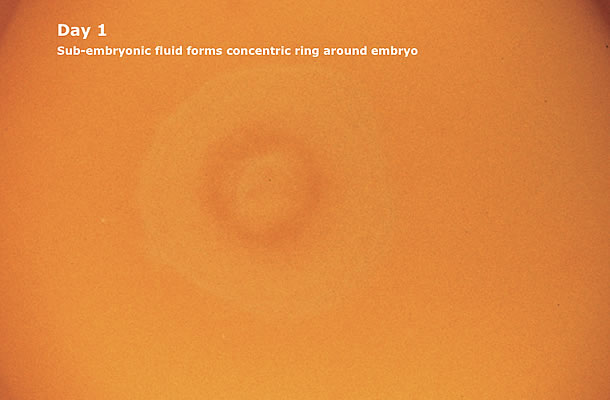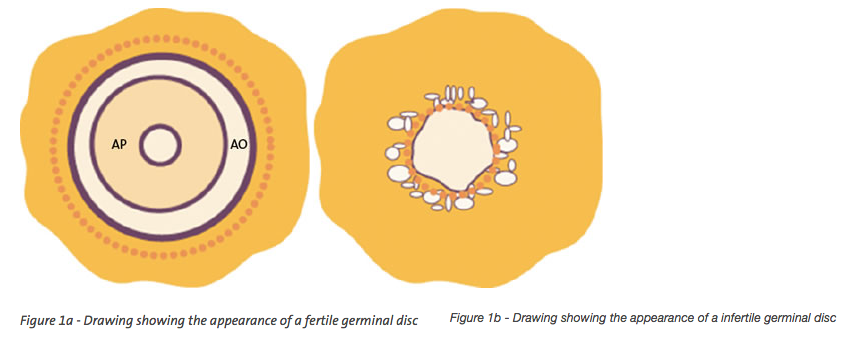
If it comes to discussions on fertility two different definitions are practiced. A true fertile egg contains a well-developed germinal disc (blastoderm). This indicates that the oöcyte, or zygote, was fertilized and an embryo developed during egg formation.
Secondly, in the practice of the hatchery fertility is often based on candling, whereby all clear eggs are defined as unfertile. By default the rest of the eggs are considered to be fertile. This second definition of fertility is strictly not correct since clear eggs may contain both truly infertile or they may contain (fertile) embryos that died early.

Fertility problems
In hatchery practice problems with fertility are usually first recognized during the candling procedure, when the number of clear eggs is higher than expected
To identify the time and the cause of embryonic death, the hatchery manager may perform an analysis of candled eggs. However, if candling is performed at transfer at day 18, it can be difficult to discriminate between true infertile eggs and eggs containing an embryo died before the blood ring stage. This is because membranes from dead embryos degenerate while the eggs are still in the incubator.
Candling
By candling at days 7-10, it is possible to reliably discriminate between true infertility and early embryonic death for two reasons.
Firstly, because embryonic membranes formed during the first days of incubation can still be recognized. Secondly, in clear eggs collected between days 7 10, a change in the color of yolk as a result of embryonic activity is clearly visible.
The active young embryo transports water from albumen to yolk, which results in a whitish or light yellow ring around the embryo.

The fertile, unincubated egg contains an embryo (germinal disc or blastoderm) developed from the fertilized oöcyte (zygote) during egg formation in the oviduct. The oöcyte is the female gamete that floats on the yolk. When bird released the yolk in the oviduct, spermatozoa penetrate the yolk membrane. Then only one spermatozoon fuses with the oöcyte to form the fertile zygote.
Final phase
Finally, during egg formation in the oviduct, the zygote develops into the blastoderm, with a recognizable Area Pellucida (AP) surrounded by an Area Opaca (AO) (figure 1a). If for whatever reason the spermatozoa do not reach the oöcyte, the egg remains infertile. Then the oöcyte will degenerate to form nothing more than a small germinal disc. The infertile germinal disc is visible as a compact white spot with ruffled edges (figure 1b). If you analize hatching eggs at the hatchery, any issues with infertility can be communicated with the breeder farm without delay.

Advice
- Candle eggs at transfer (day 18) as a standard,
- If clears are above acceptable standards, you need to perform egg analysis to distinguish between infertility and early embryonic
- Consider candling followed by egg analysis between day 7 10, as a more reliable means of measuring true fertility,
- Analyse a minimum of 10 fresh, un-incubated eggs on a regular basis. If true infertility is too high, communicate with the breeder farm about male AND female management.
- If early death before the blood ring stage is too high, evaluate conditions during storage and the transport. Also, ensure that the setter is bringing the eggs to incubation temperature rapidly and without interruption.














